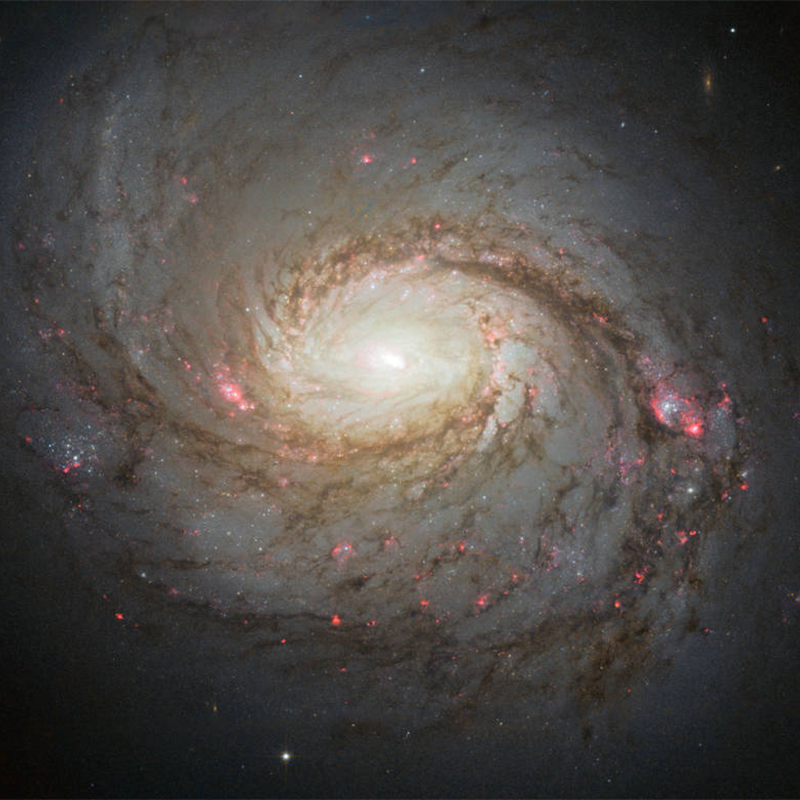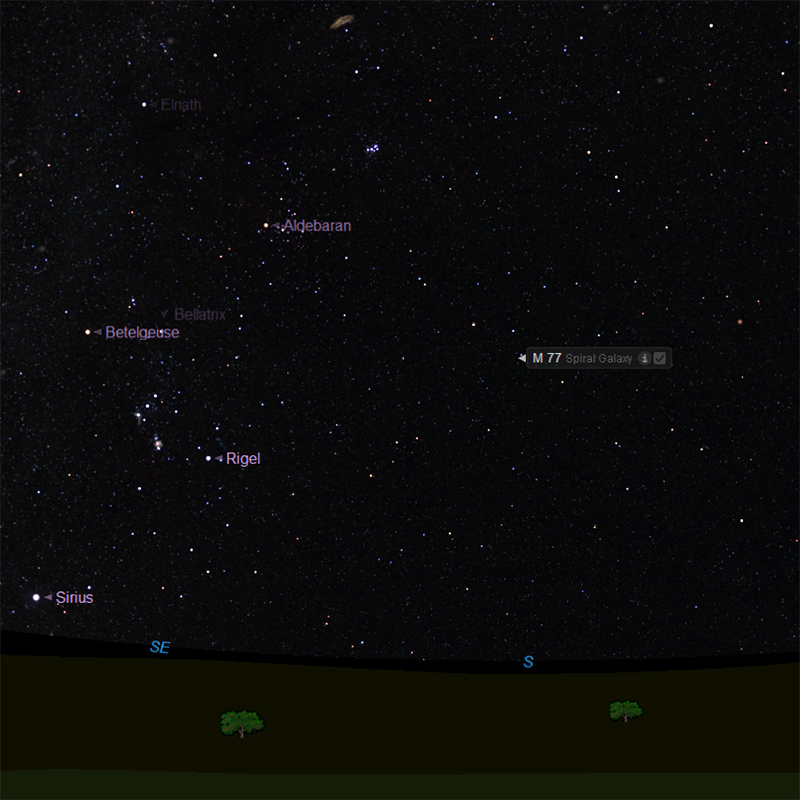M77 - Cetus A

Credits: Keith Turnecliff, Long Itchington
M77, also known as NGC 1068 and Cetus A, is a barred spiral galaxy about 47 million light-years away in the constellation Cetus. Messier 77 was discovered by Pierre Méchain in 1780, who originally described it as a nebula. Méchain then communicated his discovery to Charles Messier, who subsequently listed the object in his catalog. Both Messier and William Herschel described this galaxy as a star cluster. Today, however, the object is known to be a galaxy.
Facts about M77 by Keith Turnecliff
Messier 77 is one of the largest galaxies included in the Messier catalogue.
It occupies an area of 7.1 by 6 arc minutes of apparent sky, which corresponds to a linear diameter of 170,000 light years.
The bright parts measure roughly 120,000 light years. The galaxy’s inclination is estimated to be 40 degrees.
The galaxy is easy to spot with binoculars as it is quite compact and has a bright core.
Small telescopes will reveal a fuzzy ball of light with a bright centre, and 4-inch instruments will also show the galaxy’s oval halo.
8-inch and larger instruments reveal the details of the galaxy’s structure.
The best time to observe M77 is during the autumn.

Best viewed with resolution 1920 x 1080.
Credits: Image courtesy of Starry Night Pro Plus 8, researched and implemented by Keith Turnecliff.